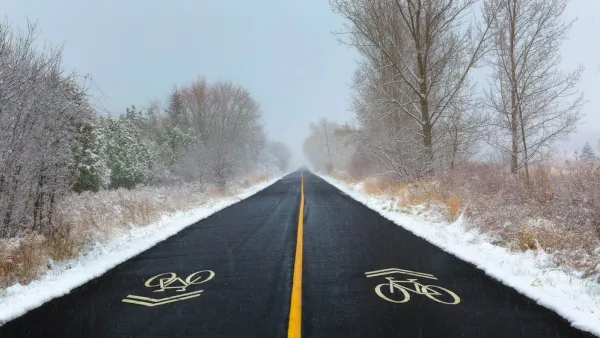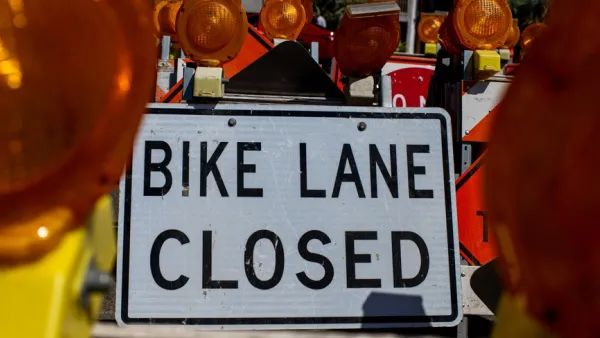Proliferating faster than bike lanes or bike parking racks may be the chevron symbols in the pavement with bicycle icon informing cyclists and motorists alike to "share the road". But can too many sharrows be a bad thing, asks Grist's Elly Blue.
Ms. Blue reports from Seattle where the sharrow has become somewhat ubiquitous since it was included in the 2007 Bike Master Plan.
"A 'sharrow' -- the word is an amalgamation of "arrow" and "share the road" -- is a larger-than-life thermoplastic symbol of a bicycle topped by two chevrons pointing the way forward.
Sharrows have been increasing in popularity nationwide, and got a boost in 2009 when they were officially entered into the federal transportation engineering canon.
Like many experts on transportation bicycling, Tom Fucoloro, proprietor of the Seattle Bike Blog, wasn't enthusiastic about them. Sharrows are spread so indiscriminately on Seattle streets, he said, that "they mean nothing now." He has noticed that there seems to be "slightly less aggression" from drivers when they're in place. "But does that mean all the streets without sharrows are worse?"
A 2004 study prepared by Alta Planning + Design for the San Francisco Department of Parking & Traffic "says sharrows slow car traffic slightly, and make bicyclists a little safer. But they are even better at keeping drivers at a distance from parked cars -- once again, bike infrastructure benefits more than just people on bikes."
From Seattle Bike Blog: Elly Blue's take on sharrows after a recent trip to Seattle: Tom Fucoloro describes his visit with "Elly Blue, a prolific bicycle writer and zine editor from Portland. Our conversation made its way to sharrows, which are the topic of her most recent story for Grist. Seattle's sharrows are a rather confused road marking, but legally, they don't do anything."
FULL STORY: BIKING Sharing time: Tracking the ‘sharrow’ on city streets

National Parks Layoffs Will Cause Communities to Lose Billions
Thousands of essential park workers were laid off this week, just before the busy spring break season.

Retro-silient?: America’s First “Eco-burb,” The Woodlands Turns 50
A master-planned community north of Houston offers lessons on green infrastructure and resilient design, but falls short of its founder’s lofty affordability and walkability goals.

Delivering for America Plan Will Downgrade Mail Service in at Least 49.5 Percent of Zip Codes
Republican and Democrat lawmakers criticize the plan for its disproportionate negative impact on rural communities.

Test News Post 1
This is a summary

Test News Headline 46
Test for the image on the front page.

Balancing Bombs and Butterflies: How the National Guard Protects a Rare Species
The National Guard at Fort Indiantown Gap uses GIS technology and land management strategies to balance military training with conservation efforts, ensuring the survival of the rare eastern regal fritillary butterfly.
Urban Design for Planners 1: Software Tools
This six-course series explores essential urban design concepts using open source software and equips planners with the tools they need to participate fully in the urban design process.
Planning for Universal Design
Learn the tools for implementing Universal Design in planning regulations.
EMC Planning Group, Inc.
Planetizen
Planetizen
Mpact (formerly Rail~Volution)
Great Falls Development Authority, Inc.
HUDs Office of Policy Development and Research
NYU Wagner Graduate School of Public Service





























